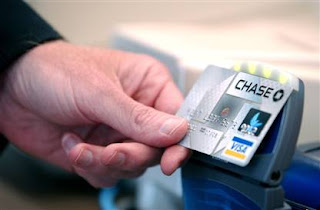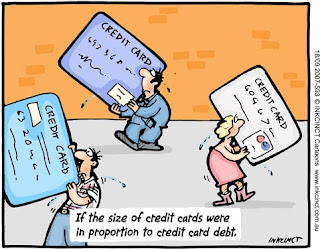
The emergence of electronic age made almost everything possible to people. Determining and curing terminal diseases made convenient, reaching uncharted territories became a possibility, and most of all; everyday life of people is made easy by the technology. We now have more convenient stores, easier means of transportation and a variety of gadgets that makes work and pleasure almost effortless.
When it comes to finances, technology—through efficient banking system and services—has given people better alternatives and options how to manage their finances. Among the so many financial management schemes that emerged, one alternative stands out among the rest—the credit card.
Credit card, especially to working people and those who live very busy lives, has become an ultimate financial “savior.” More than just being a status symbol or an add-on to expensive purses and wallets, credit card has revolutionized the way people spend their money.
But, more than the glamour and the convenience credit card brings, there is much more to this card than most people could ever imagine.
Credit Card 101
Before indulging much into the never-ending list of the advantages and disadvantages of having a credit card, it is very important for people to first have a brief realization of what credit card really is in order for them to maximize its potentials.
In layman’s terms, credit card is a card that allows a person to make purchases up to the limit set by the card issuer. One must then pay off the balance in installments with interest payments. Usually, credit card payment per month ranges from the minimum amount set by the bank to entire outstanding balance. And since it is a form of business, the longer the credit card holder wait to pay off his or her entire amount, the more interest pile up.
Since having a credit card is a responsibility, only those people who are of legal age and have the capability to pay off the amount they are going to spend through their credit card, is allowed to have one. Actually, most of the adults in the U.S. use credit card because this is very convenient compared to carrying cash or checks every time they have to purchase something.
It is also equally important to be familiar with the different types of credit cards before you begin to build up credit card balances and to avoid having a nightmare of debt. Since credit cards are indispensable to most consumers, it is a must that they understand the types of card that include charge cards, bankcards, retail cards, gold cards and secured cards. All of these types come in one of two interest rate options—the fixed and variable. Actually, it doesn’t really matter if you decide to have a fixed-rate credit card because the interest rate remains the same. Compared to variable rate cards where rate may be subject to change depends upon the credit card issuer’s discretion, fixed-rate carry higher interest rates. Basically, credit card grantors issue three types of accounts with basic account agreements like the “revolving agreement” a.k.a. Typical Credit Card Account which allows the payer to pay in full monthly or prefer to have partial payments based on outstanding balance. While the Charge Agreement requires the payer to pay the full balance monthly so they won’t have to pay the interest charges, the Installment Agreement, on the other hand, asks the payer to sign a contract to repay a fixed amount of credit in equal payments in definite period of time. Another category of credit card accounts includes the individual and joint accounts where the former asks the individual alone to repay the debt while the latter requires the partners responsible to pay. The common types of credit cards available through banks and other financial institutions also include Standard Credit Cards like Balance Transfer Credit Cards and Low Interest Credit Cards; Credit Cards with Rewards Programs like Airline Miles Credit Cards, Cash Back Credit Cards and Rewards Credit Cards; Credit Cards for Bad Credit like Secured Credit Cards and Prepaid Debit Cards; and Specialty Credit Cards like Business Credit Cards and Student Credit Cards.
Now that you have an idea how many types of credit card there is, it is now time to review your goals before applying for one. Some of the things you should consider is how will you spend with the credit card monthly, if you plan to carry a balance at the end of the month, how much are you willing to pay in annual fees, if you have a strong credit history and is does your credit in need of rehabilitation. Once you have an idea of what you are looking for choose the right credit card for you by researching the information you need that will fit your basic needs. You may also review the credit cards you’ve research and compare them.
Shopping for a credit card?
Regardless of the type of credit card you choose, be sure to discuss your specific financial needs with your financial advisor or accountant before applying for any credit card. It is a must that you understand the benefits of having a credit card like safety, valuable consumer protections under the law, and the accessibility and availability of services. The most popular credit cards include Chase Manhattan Bank, Citibank, Bank of America, BankOne, American Express, Discover® Card, First Premier Bank, Advanta, HSBC Bank, and MasterCard Credit Cards.
Although having a credit card is synonymous to invincibility, this may also trigger a person’s thirst for material things and may lead into the temptation of buying something they don’t really need. A credit card bearer should always have in min that having a credit card is a big responsibility. If they don’t use it carefully, these may owe more than they can repay. It can also damage their credit report, and create credit problems that are quite difficult to repair.























